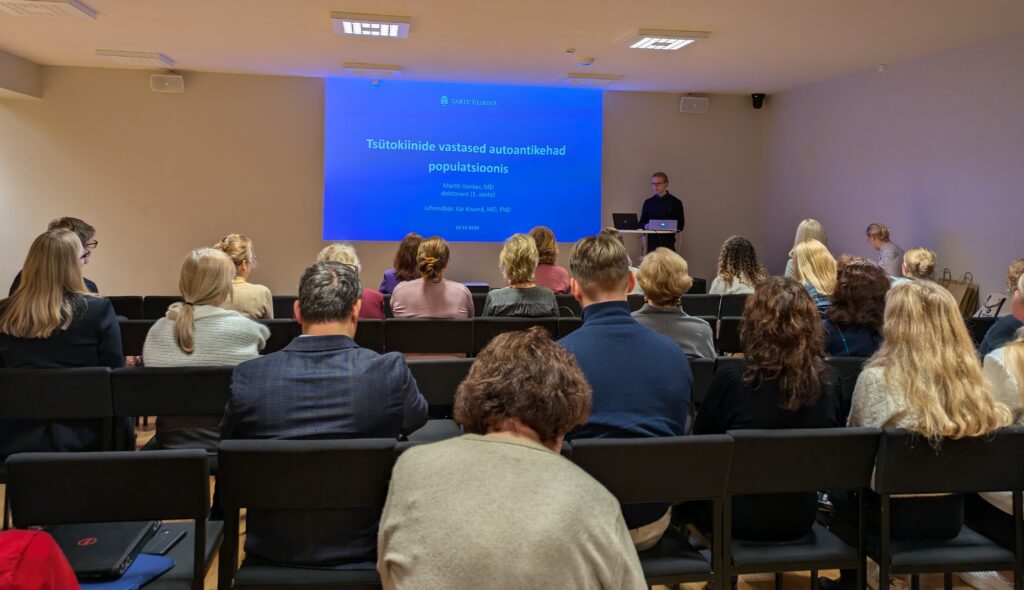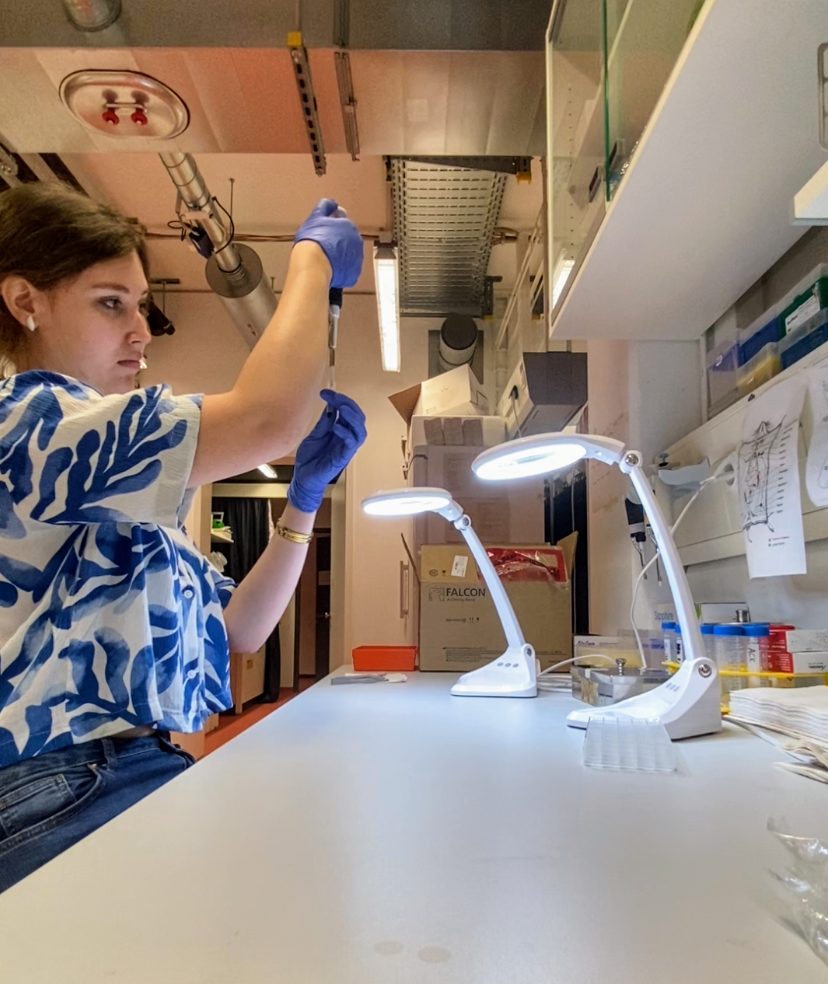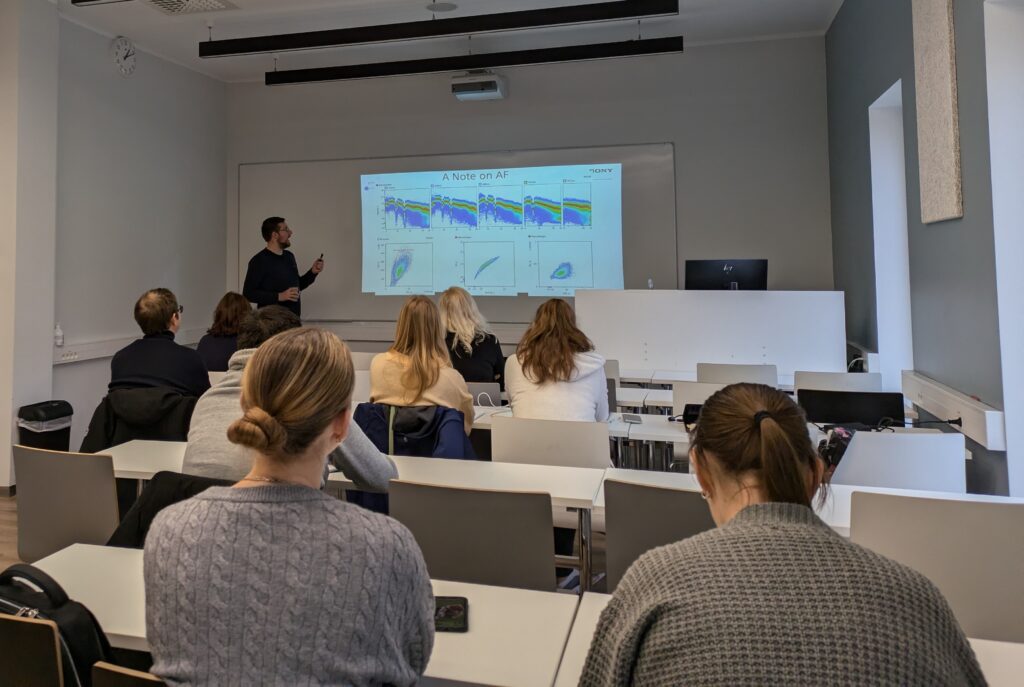The Thymus Takes Center Stage: Conference Highlights from ThymUS 2025
Written by Elise Helena Armulik
The thymus is a primary lymphoid organ essential for the development of T-cells, the key cells in adaptive immunity. It plays an important role in training T-cells to distinguish between self and non-self, a process that is vital for maintaining immune tolerance and preventing autoimmunity. Despite its importance, many aspects of thymic biology remain underexplored.
ThymUS 2025, a conference held in the stunning setting of Kaua’i, Hawaii, was entirely dedicated to the thymus. As part of the Global Thymus Network, this international conference takes place every four years and brings together leading scientists and early-career researchers, united by their passion for thymic biology and T-cell development.
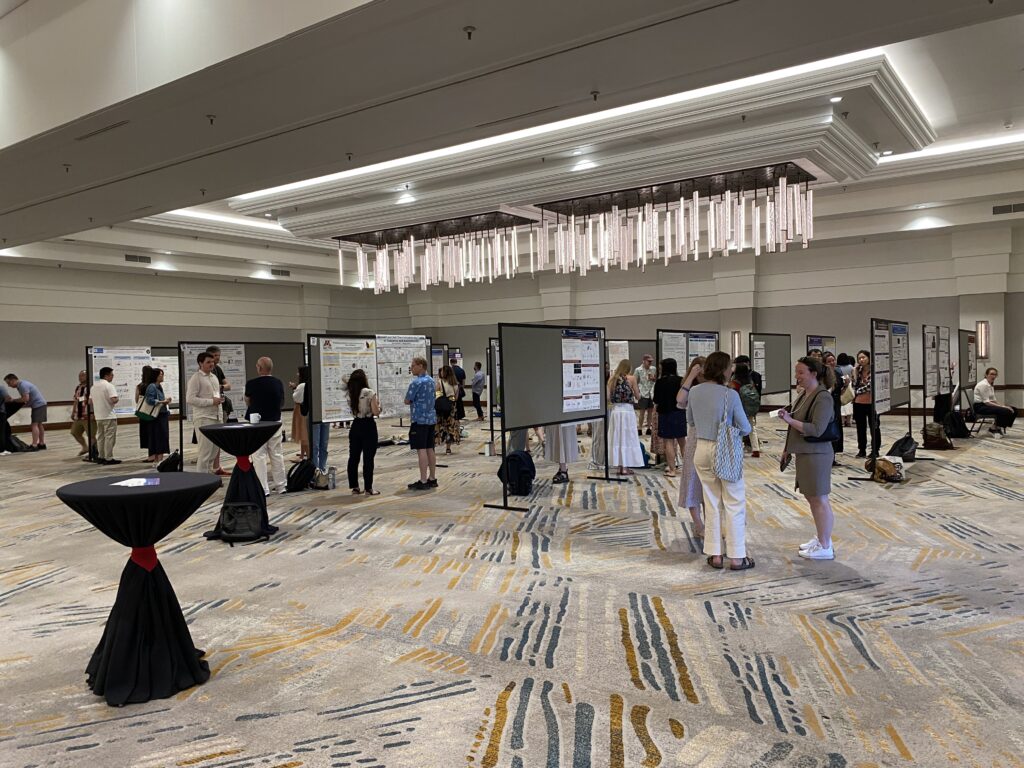
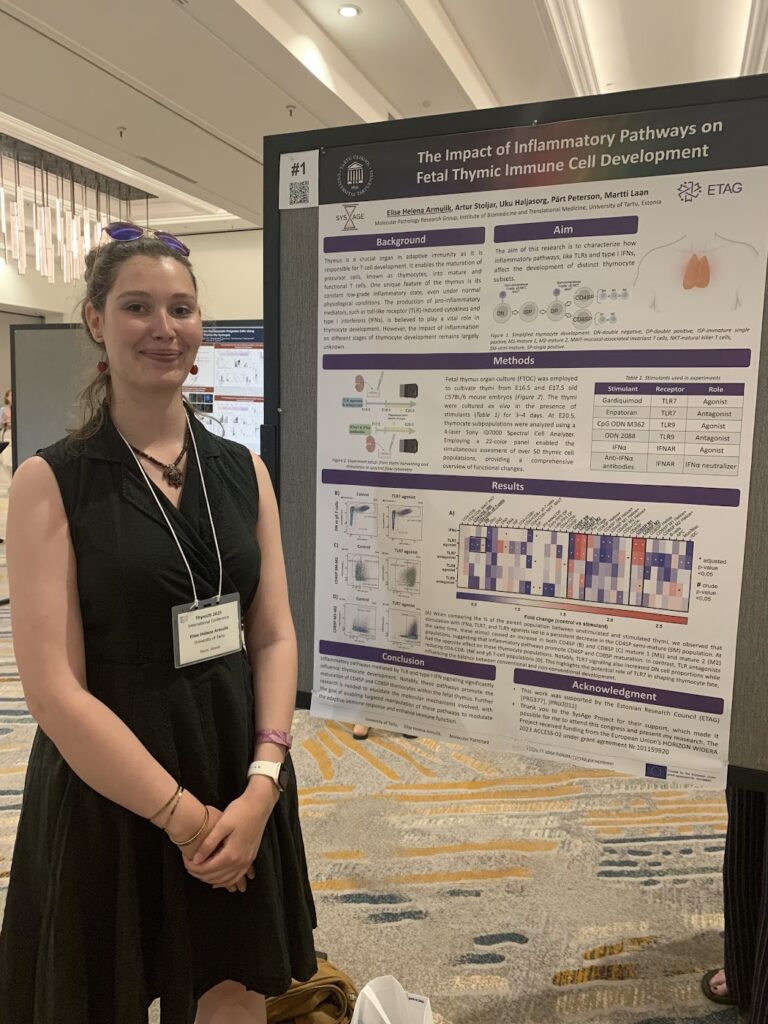
As a PhD student working on thymic development, it was truly energizing to attend a meeting where every single session is directly related to my work. Unlike general immunology conferences, where thymus topics are often scattered or sidelined, ThymUS offered a rare chance to dive deep into the field, not just into the latest discoveries, but also into the techniques researchers are using and the open questions the field still faces.
One of the personal highlights of the week was presenting my poster titled: “The Impact of Inflammatory Pathways on Fetal Thymic Cell Development”. Since my work is not yet published I will not go into further detail here. But safe to say it sparked many discussions and I got valuable feedback from fellow attendees. These conversations not only validated the direction of my PhD work but also opened up potential collaborations.
But I wasn’t alone at the conference with me was prof. Pärt Peterson, my supervisor, who also presented a poster titled: “AIRE Controls Thymic Expression and Immune Tolerance to Type I IFN.”
His work focuses on the AIRE gene, which plays a critical role in helping the thymus “teach” developing T cells to tolerate the body’s own proteins. When AIRE is functioning properly, it prevents the immune system from attacking the body itself. However, in individuals with AIRE gene defects, this tolerance breaks down. Using a rat model to study this further, a surprising outcome of AIRE deficiency was the development of neutralizing autoantibodies against type I interferons — signaling molecules normally essential for launching immune responses against viruses. In most cases, such autoantibodies are harmful because they block antiviral immunity. But in autoimmune conditions linked to AIRE mutations, where the immune system is already overactive, these same autoantibodies may actually have a protective, anti-inflammatory effect by dampening excessive immune activation.
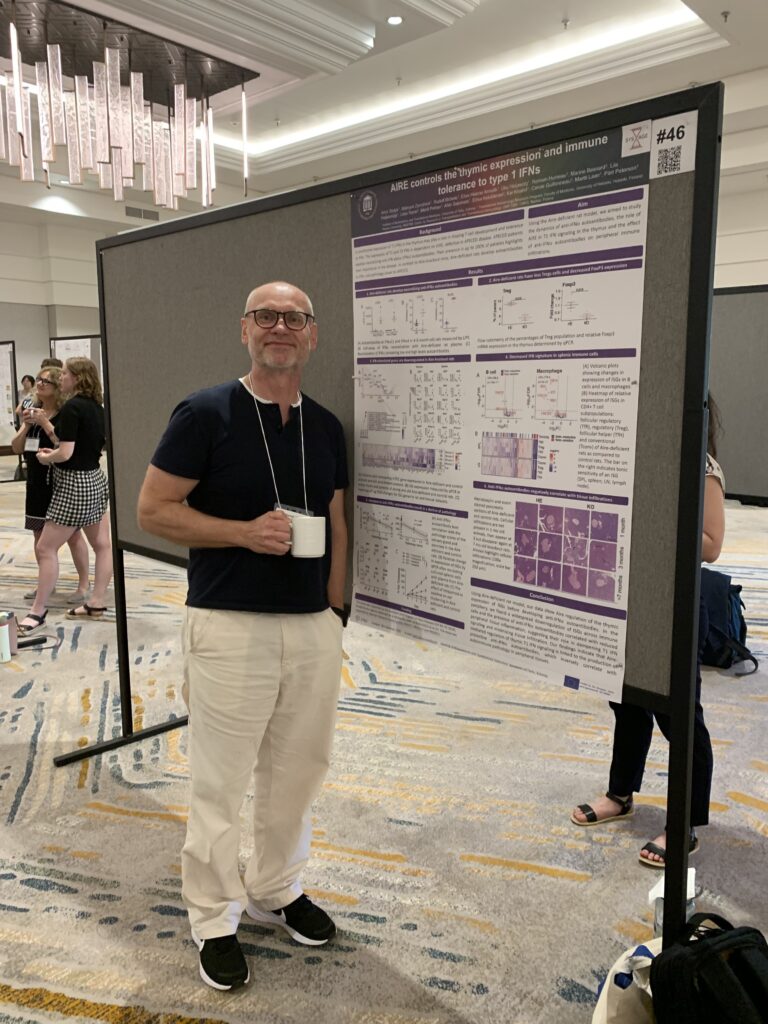
For those interested in reading more, you can find a recent open-access article explaining this phenomenon here.
Alongside the poster sessions, the scientific program featured several talks that left a lasting impression. One of the most memorable talks came from Dr. Alfred Singer (NIH), who gave a keynote lecture on cis-regulatory elements in co-receptor genes. His team’s work revealed how the duration of TCR signaling influences positive selection. Their experiments offered elegant insights into the molecular underpinnings of thymocyte education. Another standout presentation came from Dr. Xuguang Tai, also from the Singer lab, who explored how developing T-cells decide whether to become regulatory T-cells (Tregs), which help keep the immune system in check or effector T-cells (Teffs), which carry out immune responses. His team’s findings challenged the traditional assumption that the timing of TCR signals determines this outcome. Instead, their data showed that it’s actually the duration of the signal that plays the key role. This subtle but important shift in understanding could reshape how we think about T-cell development and immune tolerance.
For those curious to dive deeper, you can read more in the original publication here.
ThymUS 2025 was not only scientifically stimulating but it was also a rare opportunity to engage deeply with a niche yet vibrant research community. We returned with new ideas, refined hypotheses, and renewed motivation to push forward our own work on the thymus.
I am incredibly grateful for the financial support provided by our scholarships by Olev ja Talvi Maimetsa stipendium, Andreas ja Elmerice Traksi stipendium and the SysAge project, which made this experience possible.



